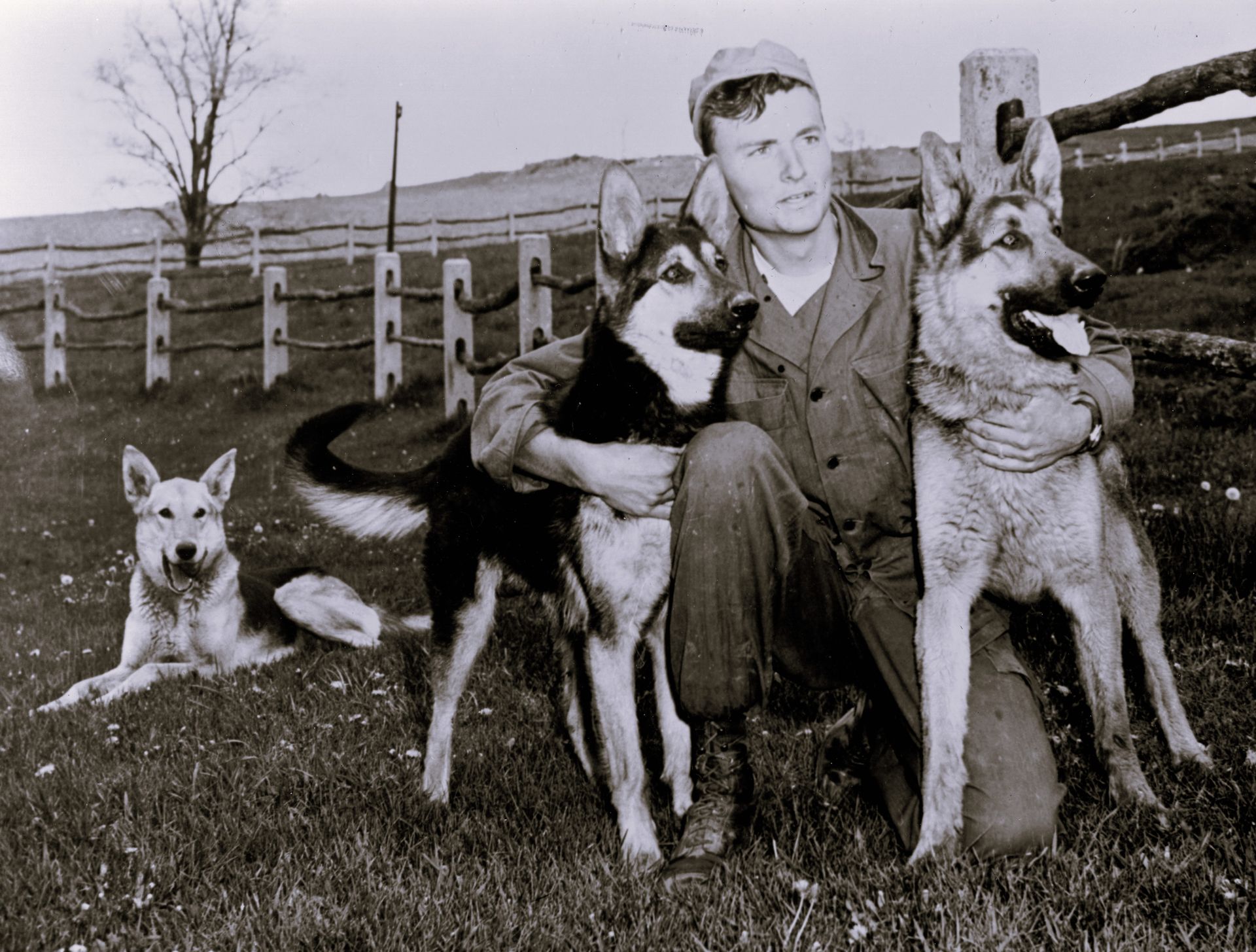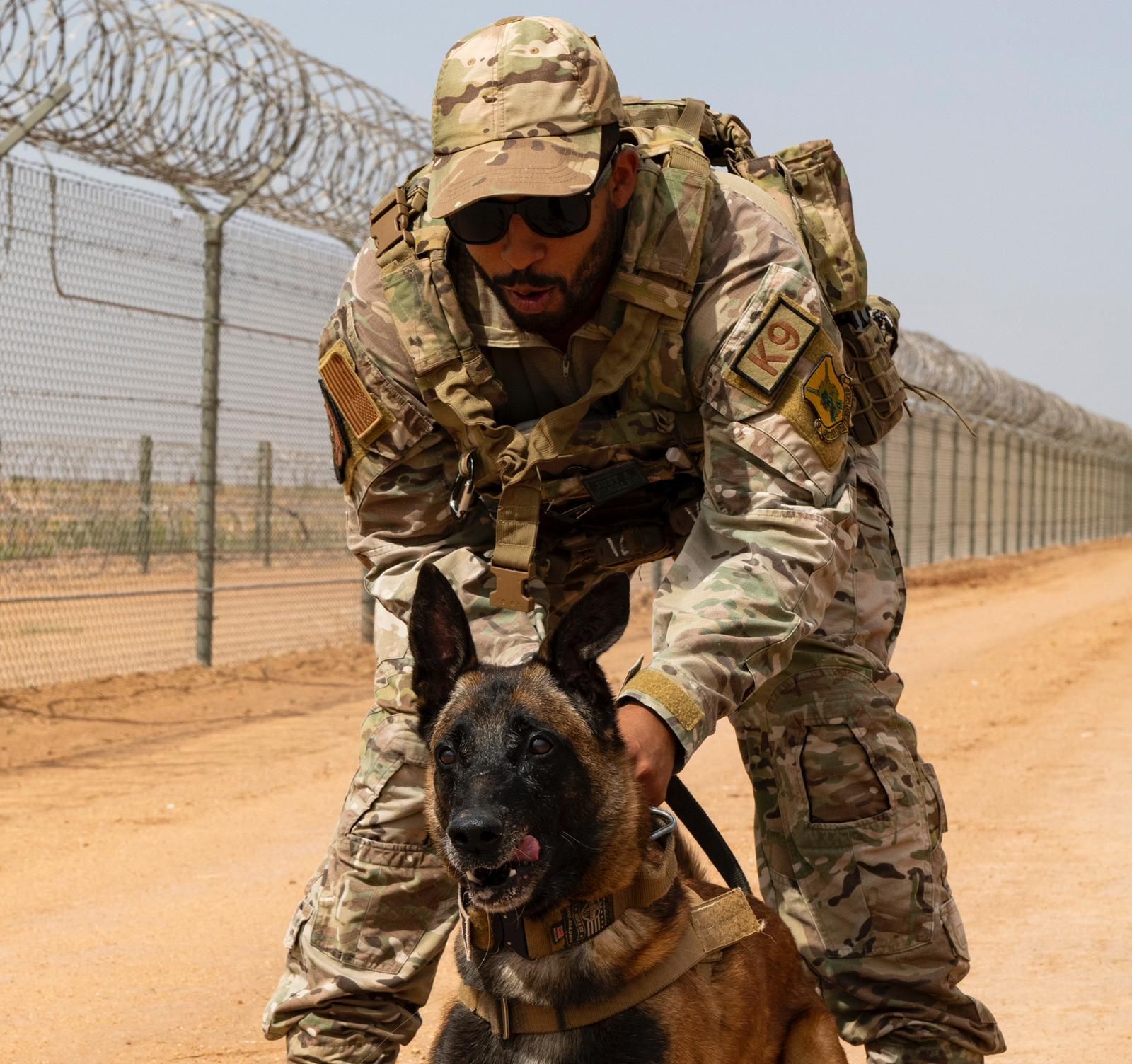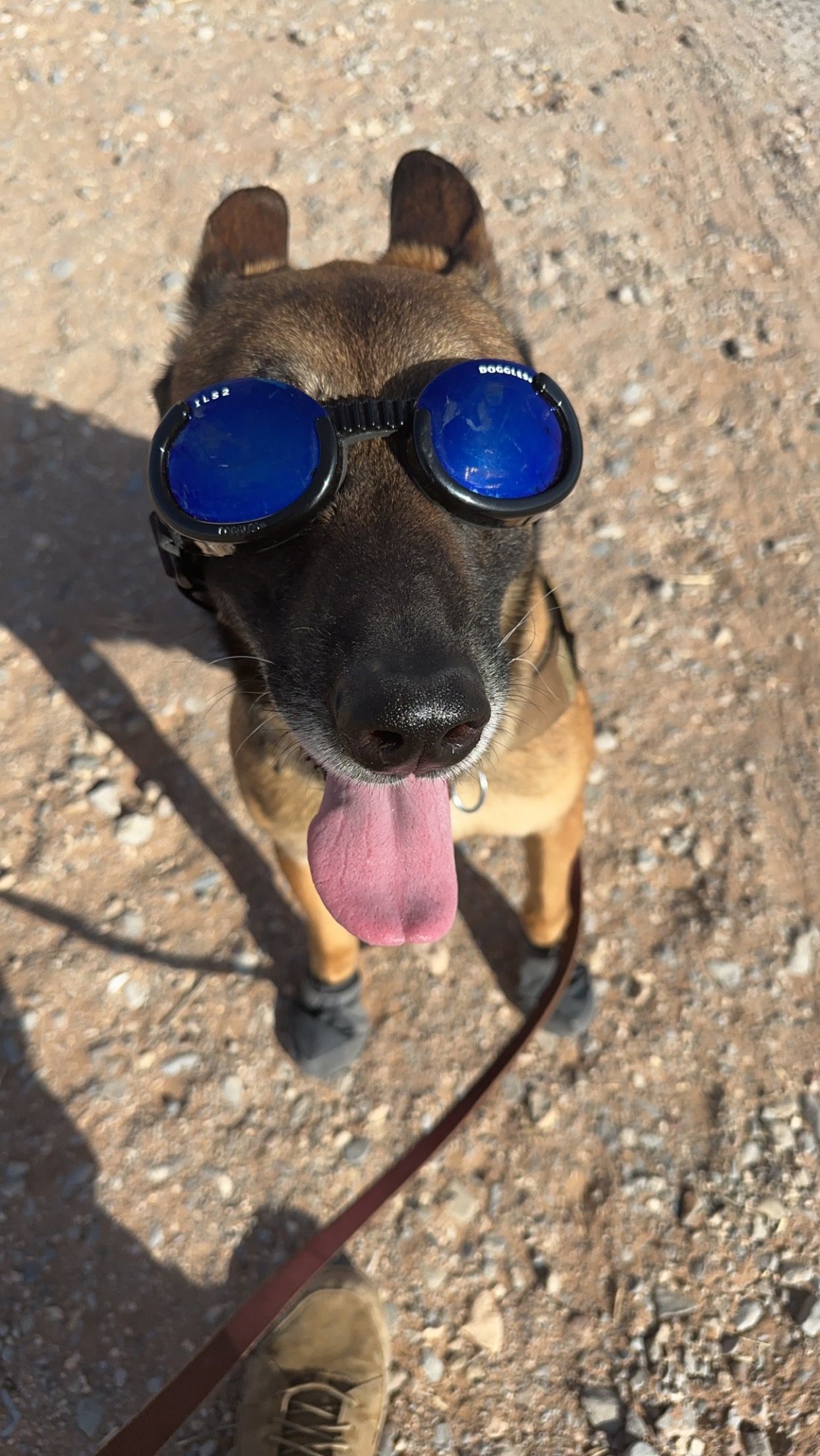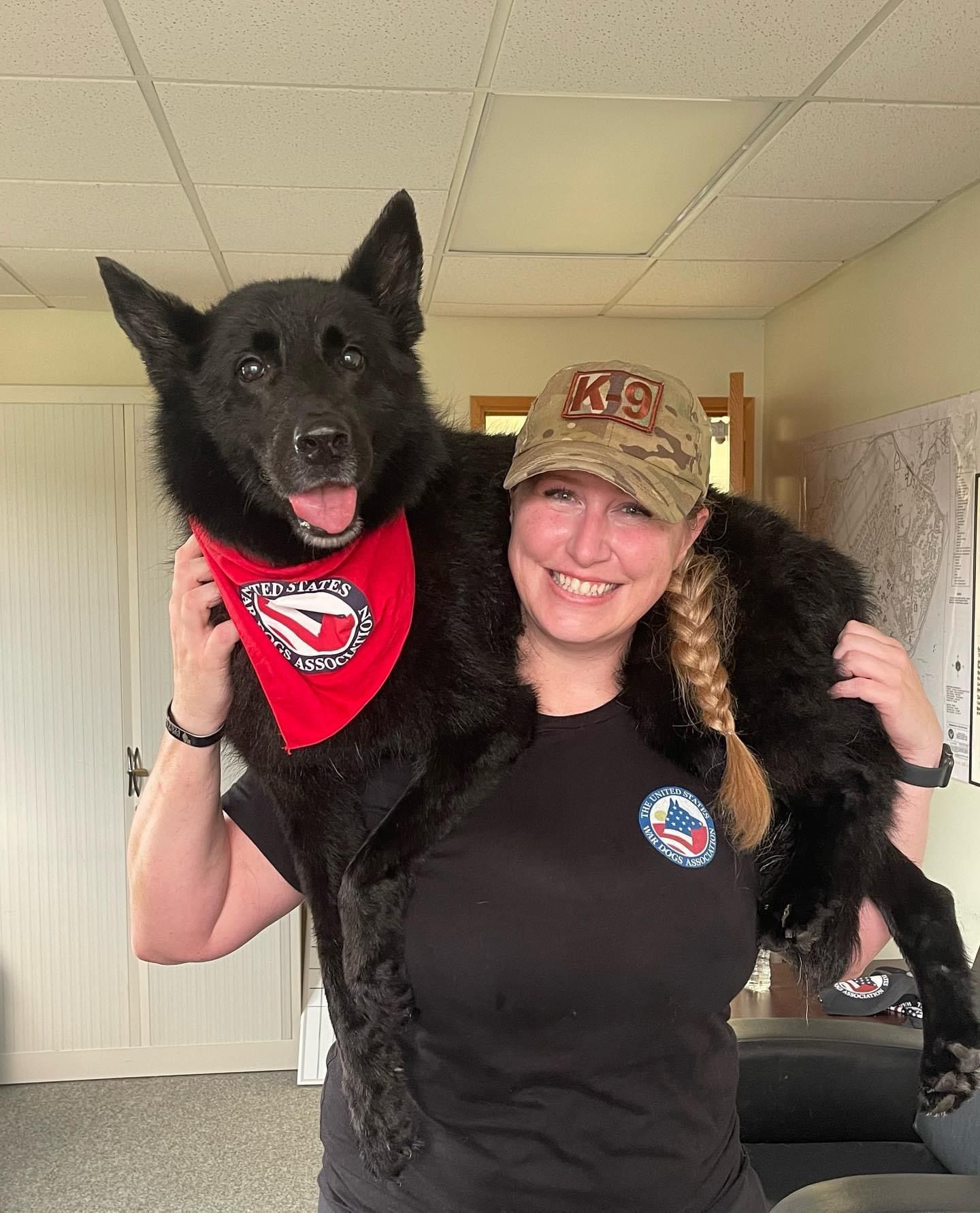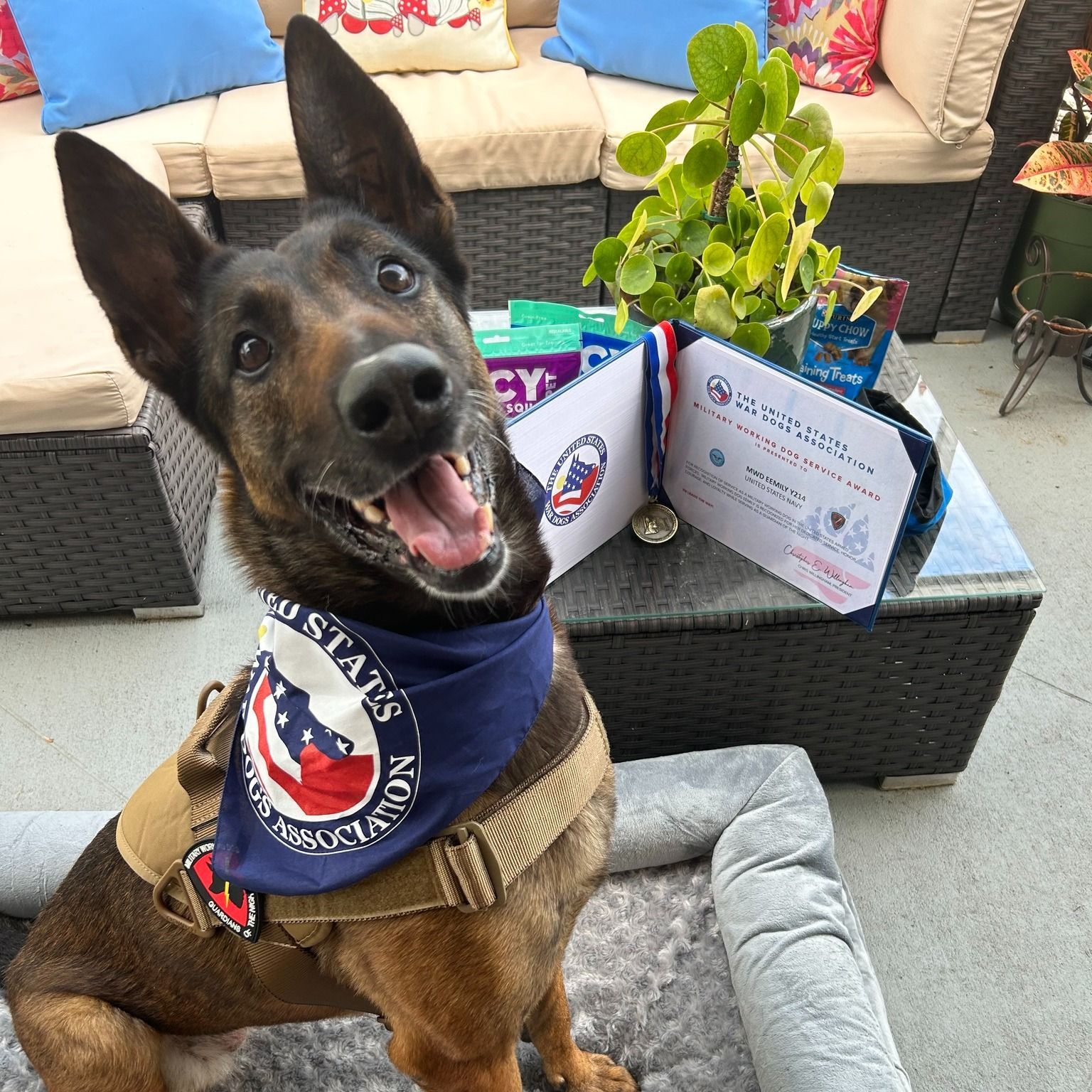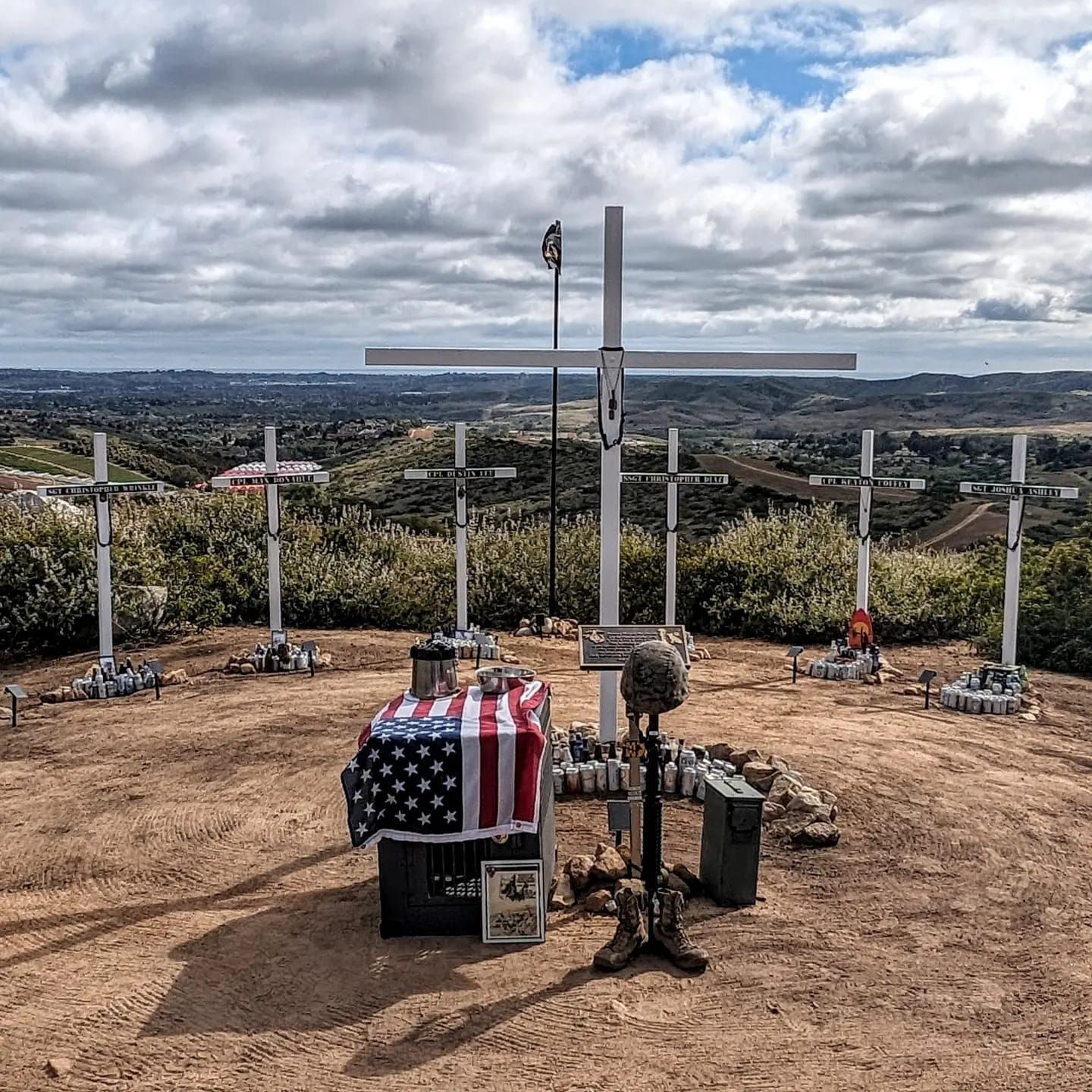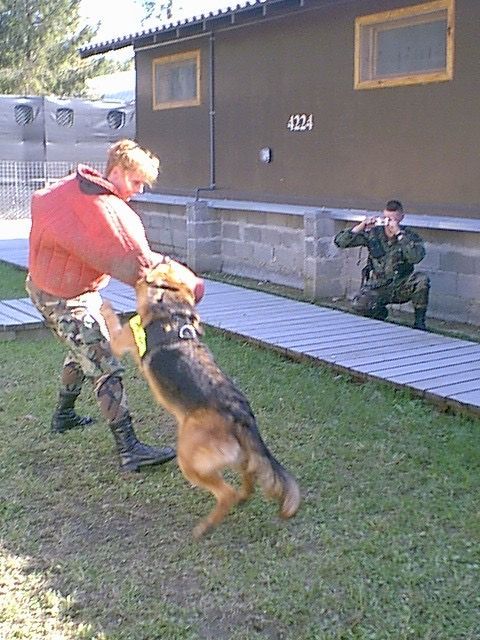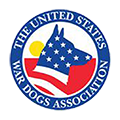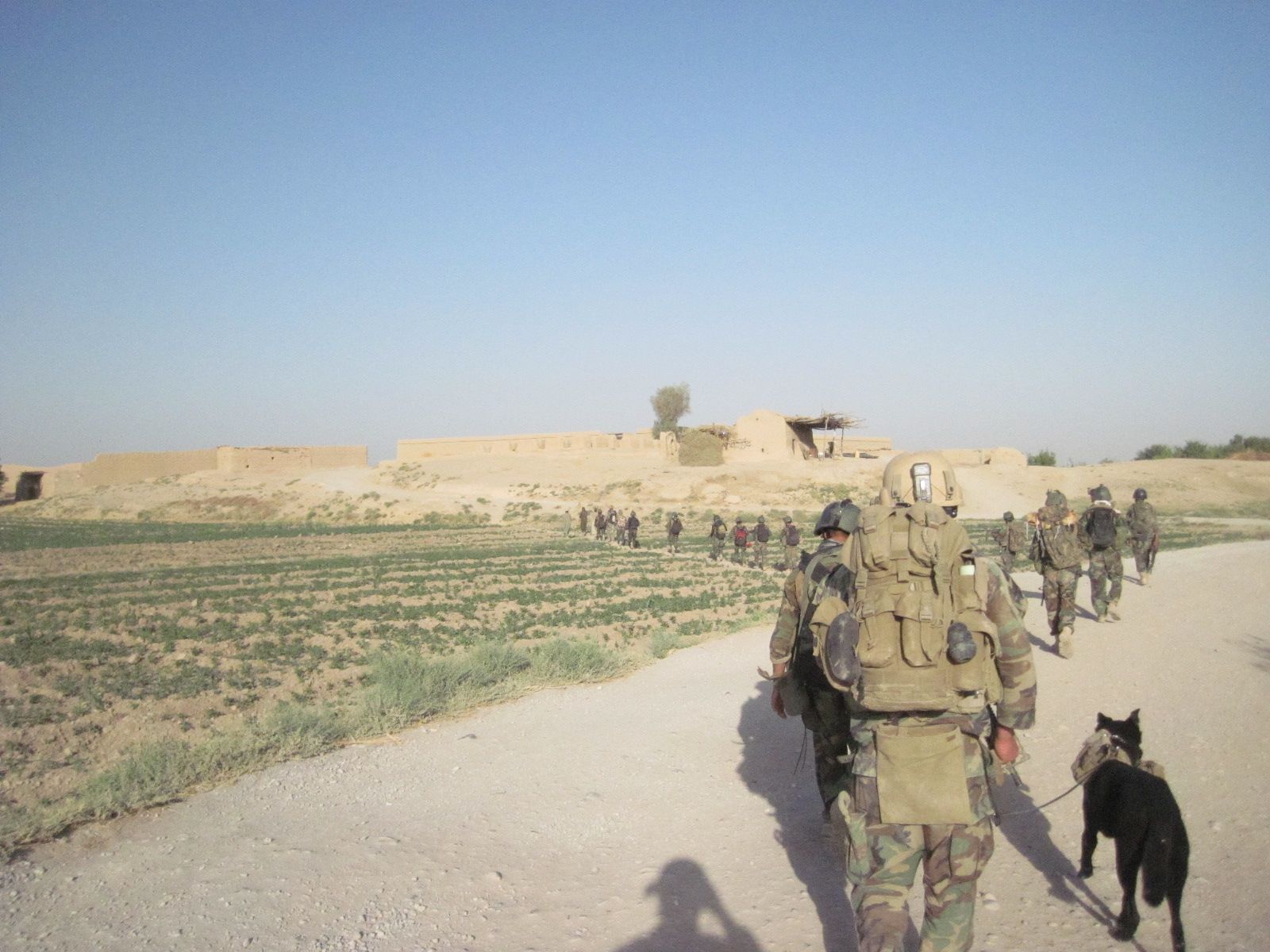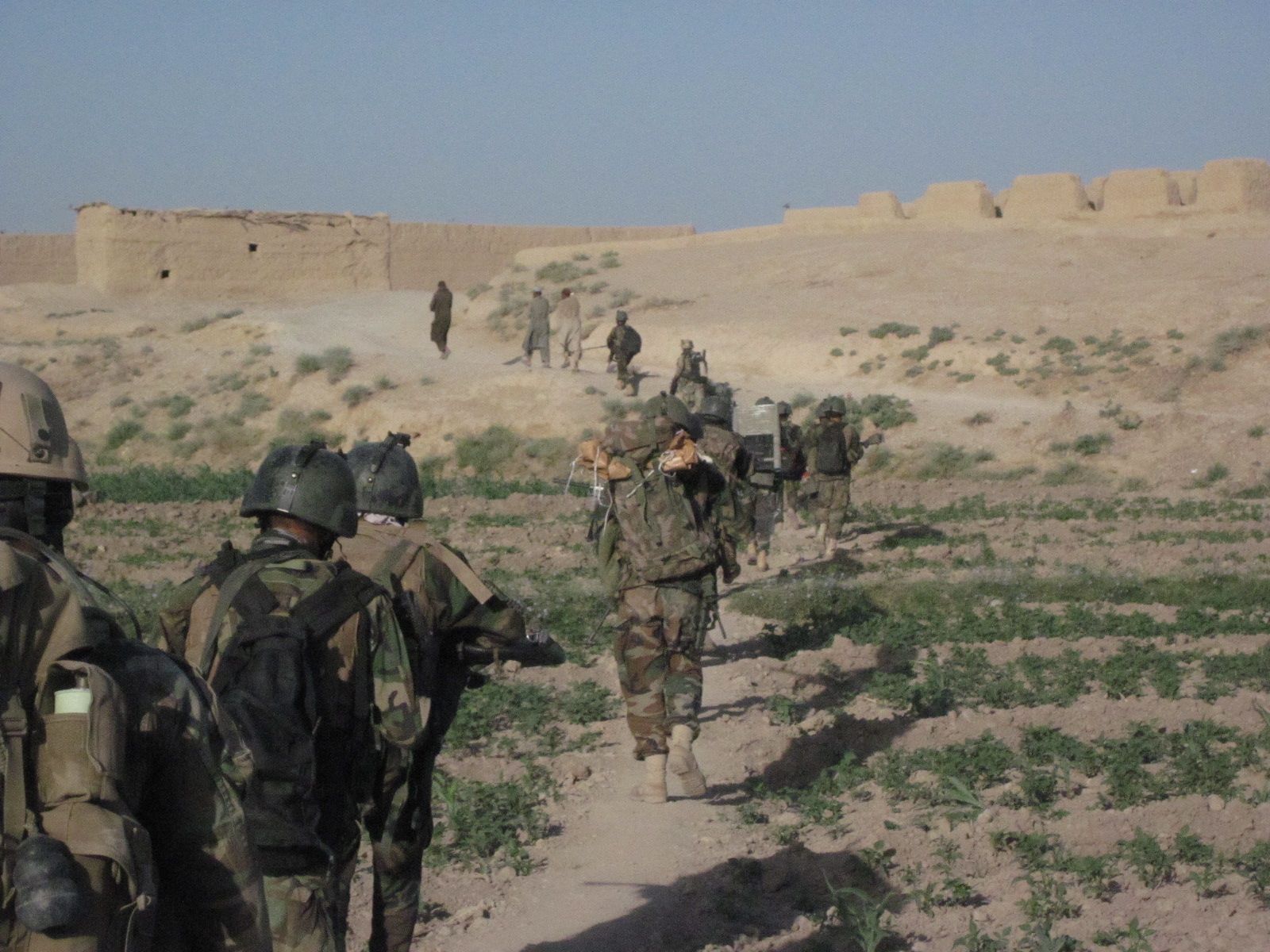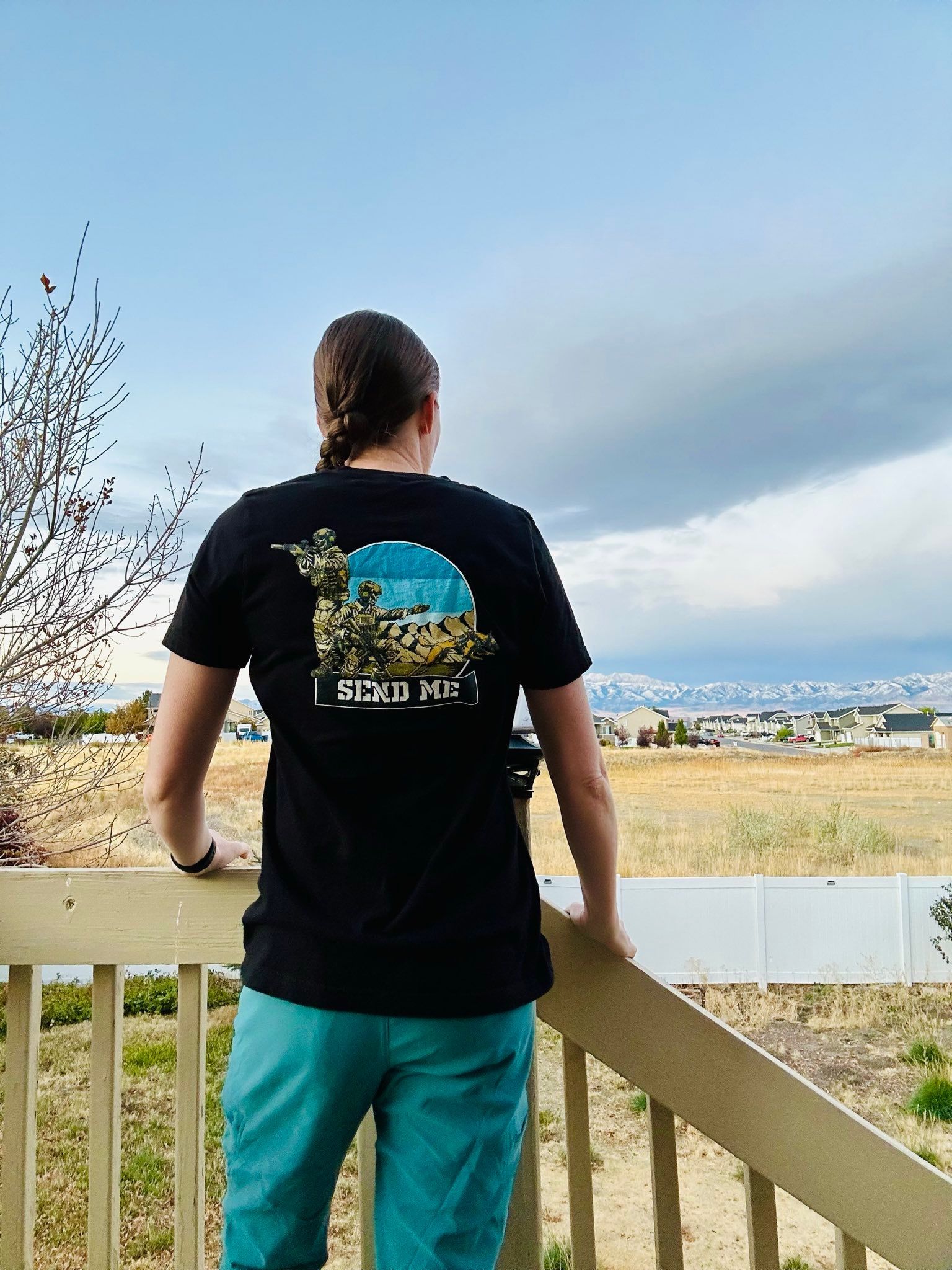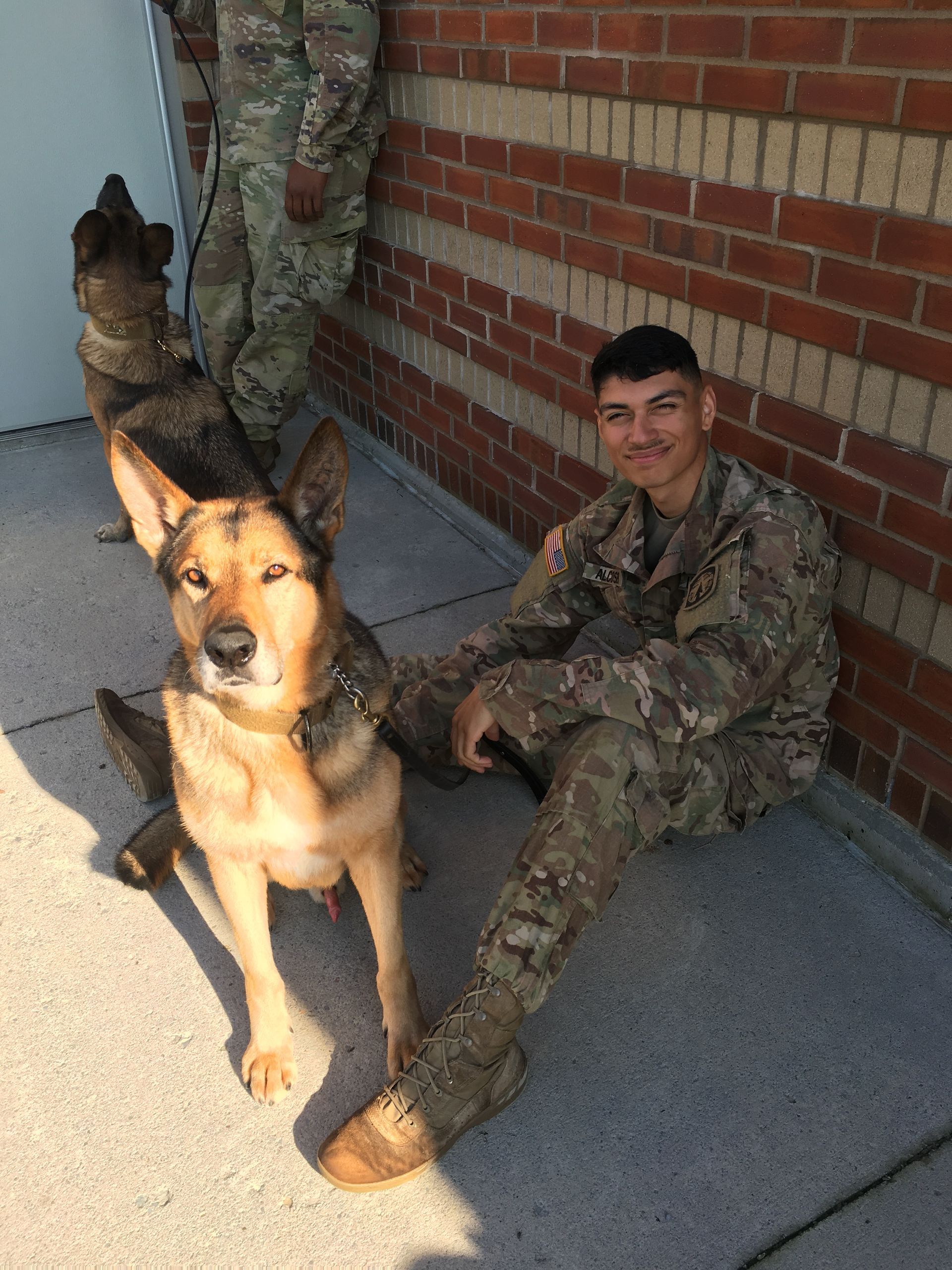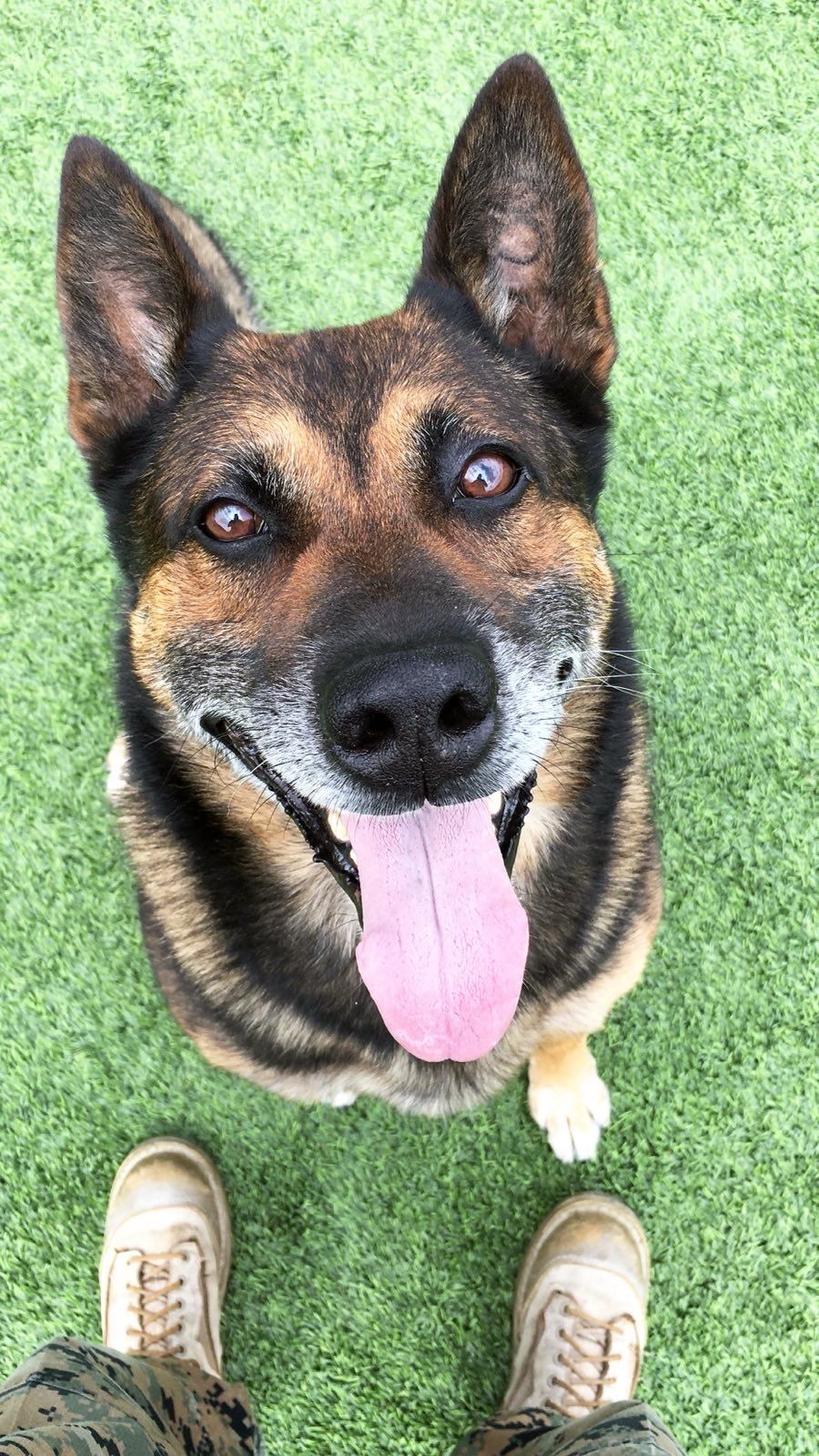
Meet Billy Soutra – US Marine Corps Dog Handler and Navy Cross Recipient
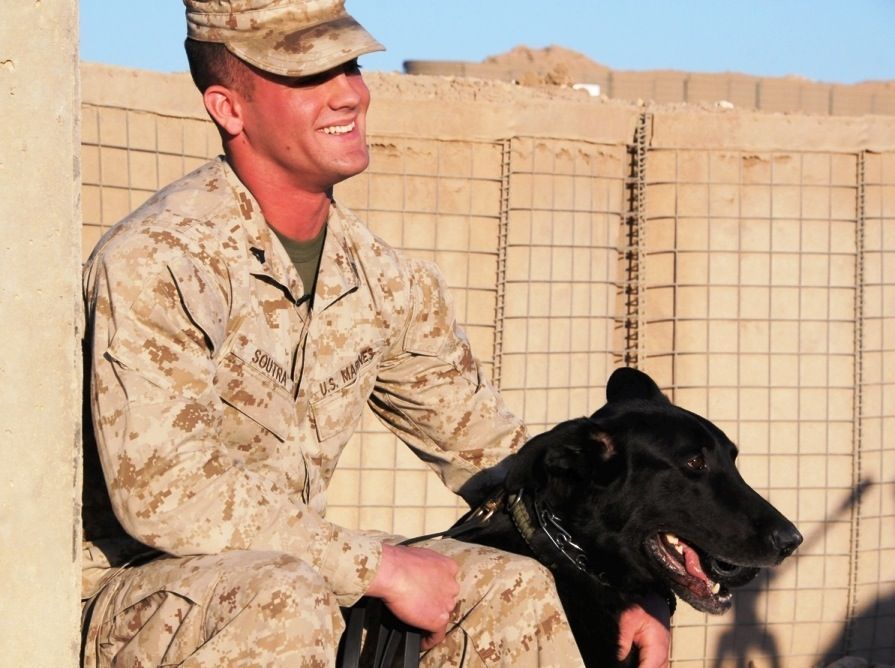
It was no surprise that William B Soutra joined the US Marine Corps. He would be the third generation to carry his name and serve his country as a devil dog, but Billy’s story would do more than follow a family tradition – it would make history.
His plan, like many young men and women who sign on the dotted line to defend their country, was to enlist for a couple of years and then return home to his native Worcester, MA, to be a firefighter. But the pull of being part of something bigger than himself took root and the allure of a career in K-9 captured Billy’s imagination. “My mom would never let me have a dog”, said Billy, “but maybe the Marine Corps will.”
Devil Dogs
Selection for K-9 was tough but Billy secured a spot on the basic handlers’ course in 2006, working with traditional police dog breeds on basic patrol and scout work skills. The war was ramping up and the need for more dog handlers was increasing dramatically. Billy recalls: “these push-button dogs helped us new handlers to hone our skills. My first dog, Rex, was a great teacher for me and we were awarded the Top Dog team accolade, which felt really good. My second dog, Fanny, made my life a little more interesting, but it was all great experience.”
On completion of the basic training, Billy was selected for the specialized search dog (SSD) course – a new frontier in the K-9 program that had been created to combat the deadly, emerging threat of IEDs in Iraq and Afghanistan. Former US Marine Corps master sergeant and incumbent US War Dogs Association president, Chris Willingham, was drafted in as the first trainer to run the course at Lackland Air Force Base, TX. Chris recalls: “I interviewed the graduates from the basic handlers’ course and assessed their capabilities across the board. We were looking for the top ten per cent to move into the SSD course but it wasn’t just Billy’s scores on paper that were impressive. He had a quiet confidence and a maturity that made him an easy choice to attend the course.”
The new handlers on the SSD course were in for a rude awakening. “It’s not just about giving commands to push-button dogs now” says Billy. “We were given green dogs to train from scratch, which is a very different experience. We were also working with non-aggressive breeds like Labradors, who have very different work ethics to the Herders, Shepherds and Malinois that we were used to.”
In February of 2007, after completing the SSD course and graduating as a military working dog handler, Billy was posted to Security Battalion, Camp Pendleton, CA, where Billy met Dina – a petite Belgian Malinois with a black muzzle and a high-pitched bark. “Dina had been stuck in the kennel longer than she should have been while she awaited her fate”, explains Billy. “There was talk of retiring her because she was thought to be gun shy but when I started taking her out for walks and trips to the training site for exercise, you could see her behaviour change. She instantly became happier.”
Billy was informed by some of his senior Marines about Dina’s past and what a great working dog she had been. “Not long after that, I was able to start working her in a full pre-deployment training cycle.”
Billy and Dina were quick to put their training into operational use when they deployed together in support of Operation Iraq Freedom in September 2007. The pair conducted combat operations in Falluja. “She was an extremely loyal and obedient dog”, recalls Soutra. “She was very protective and intelligent – the speed at which she understood what I was trying to get her to accomplish, both in training and on operations was very impressive.”
“She was so obedient that she never needed to be leashed. When I pointed up, she would jump up and climb on things. If I pointed down, she would crawl under things and inside places and she did all of this from extreme distances – far beyond voice control. We made a great team.”
Billy and Dina returned to Camp Pendleton in April 2008. For Dina, who was now seven years old, it was time to hang up her doggles and retire.
“Dina and I had accomplished a lot together and I trusted her implicitly because she had such strong natural abilities. But I knew my time with her was coming to an end and my next dog had a tough act to follow.”
“There was really only one dog in the kennels that captured my attention. Posha.”
Posha – a beautiful black German Shepherd with huge pointy ears – had earned a fierce reputation at Camp Pendleton. “He was one of the most aggressive dogs in the kennels. He didn’t fear anything and had no time or patience for other dogs. But I couldn’t help but feeling he was misunderstood, so I spent time with him and earned his trust. It worked out really well for both of us.”
Billy’s patience and skill with Posha was about to be put to the test as the need for K-9s in military theatre continued to increase.
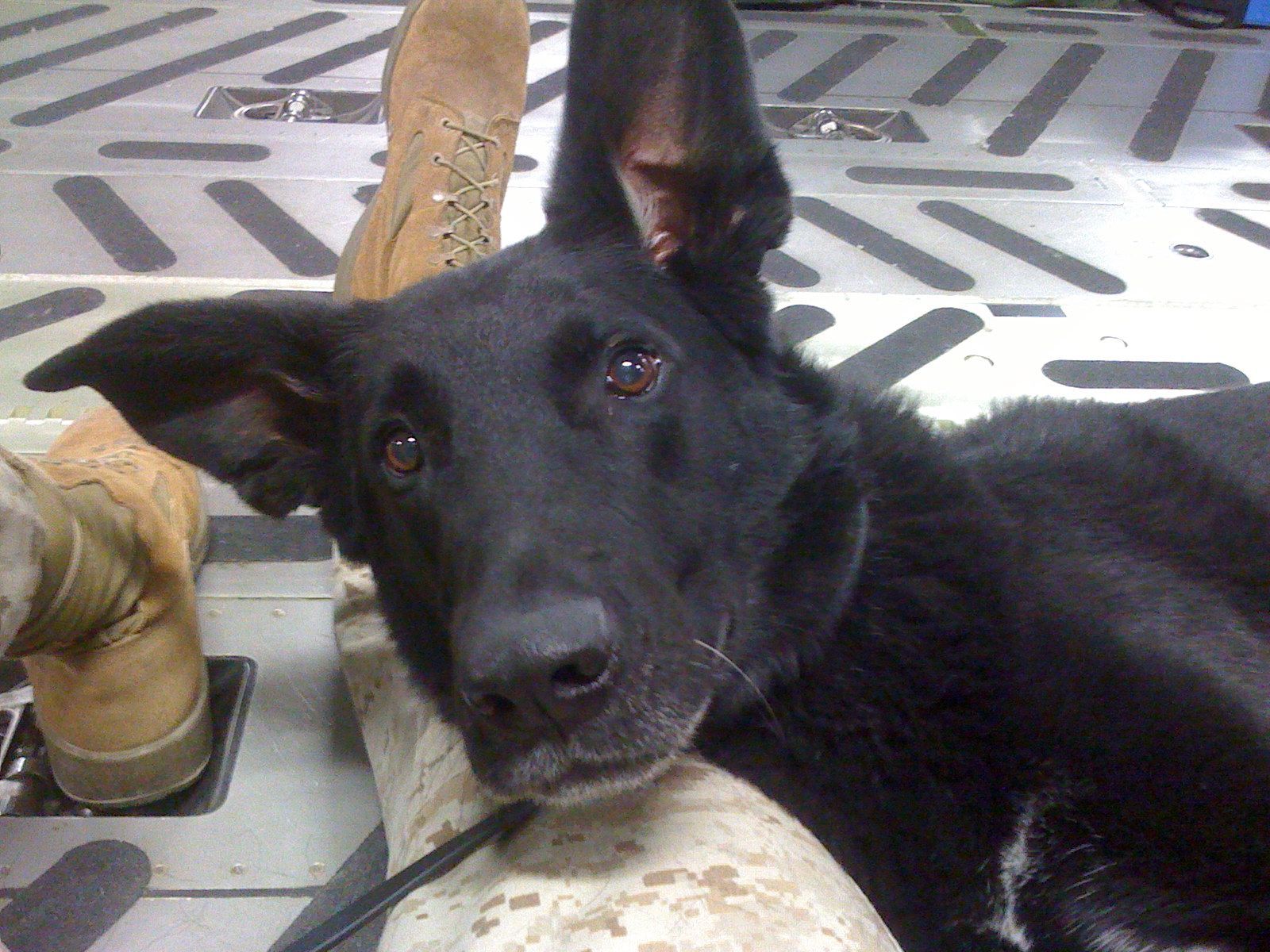
Posha was one of the most fearsome residents of the kennels in Camp Pendleton
Ground Swell
The landscape of the MWD Program within the Marine Corps was changing at breakneck speed during this period. The Corps was in the process of developing three large K-9 platoons to support the war effort at Camp Pendleton, Camp Lejuene and a third, split between 29 Palms and Okinawa, proving the huge operational significance of MWDs and their effectiveness against modern-day threats on the ground.
Willingham and his SSD, Lucca, were moved to Camp Pendleton in December of 2007, in support of the increased need for MWD support. “It was a frenetic time, with a huge increase in demand for dogs and their capabilities”, recalls Willingham. “K-9 was answering a call and it felt good to be able to serve our country by bringing such a key skill to the fight. Deployments were coming up thick and fast and no sooner were we home, our next posting was up and we were gone.”
Having both deployed to Iraq already, Willingham and Soutra deployed again in October 2008 with their SSDs, alongside two other Marines.
“Dog handlers are often loaners – attached to other units and working away from their fellow team members. This deployment offered a unique situation, in that Chris and I got to stay together”, says Billy.
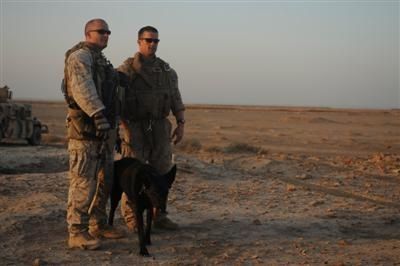
Soutra and Willingham on deployment in Iraq, 2008
“Nothing galvanises a bond like a seven-month deployment”, notes Willingham, “but as anyone in that situation knows, that bond goes deeper than a professional relationship. I had seen Billy grow as a Marine and witnessing him in a combat environment, I fully understood the depth of his skills and capabilities. He kept a cool head, he was an excellent multitasker and was always entirely dependable.”
Soutra recalls: “We had a productive tour and had really bonded. Posha was my best friend and saved my life on multiple occasions. I had made the right choice with him and he was having the time of his life.”
Kryptonite
With Willingham and Soutra working together, their two dogs became closely acquainted, with Lucca manifesting an unlikely weakness in Posha’s usual stud muffin exterior. “Posha loved Lucca”, explains Billy. “It was so funny to see this usually cool and understated dog, turn to mush when she was around.”
Chris said: “He would puppy dance and puff out his chest when she was around. Watching them play and flirt was always fun and helped us to unwind between missions.”
With new deployments coming in all the time, it wasn’t long before Billy’s skills were required again. “I was fortunate enough to stay with Posha for our first deployment to Afghanistan in 2010.”
Afghanistan
Billy – now a sergeant – and Posha were attached to the Marine Special Operations Team (MSOT) and provided mission-critical capabilities that made the difference between life and death for the platoon. “That deployment was frenetic and busy – Posha had made several important finds. His track record was proven and we had a great relationship with the team.”
Soutra worked closely with staff sergeant Chris Antonik, a capable and diligent leader of MSOT. “He had a great knack for the military. He was a tactical thinker and a true Marine, in every sense of the word. His skill and work ethic inspired me.
“Chris was also an absolute dog lover, so when the usually standoffish Posha sat on his lap one day while we took a break, it was a moment worthy of a photo.”
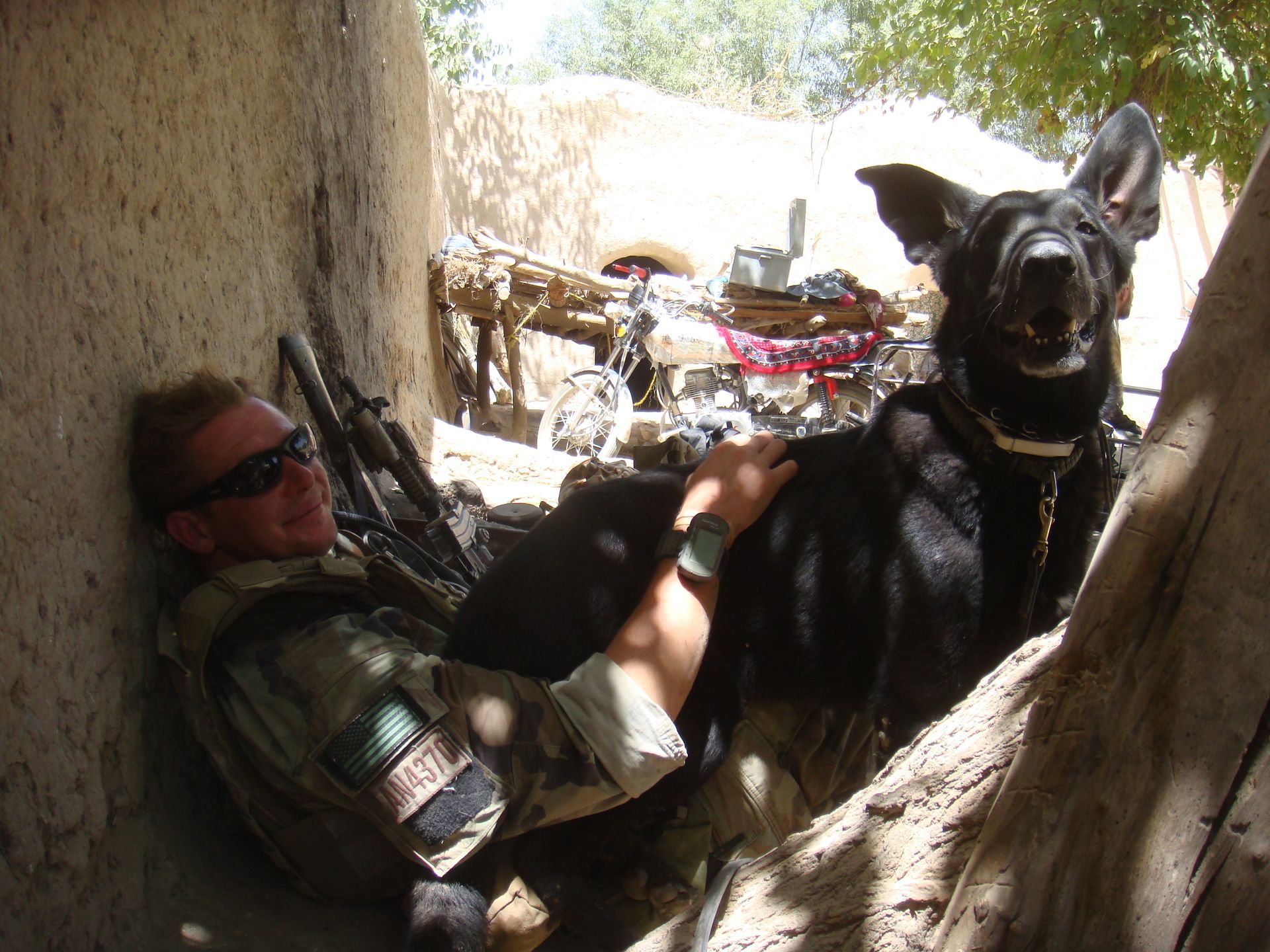
Posha took a shine to Marine staff sergeant Chris Antonik
That deployment would play host to a mission that would test Soutra’s military capabilities to their outer limits.
Mission
The two-day mission to cordon and search 11 compounds of interest in an attempt to limit the actions of local insurgents. Billy and Posha were assigned to walk point, with SSgt Antonik leading the whole operation.
The terrain around the target area for the mission was rugged, with overgrown vegetation lining a mass of irrigation canals, making visibility poor and ground movement slow and difficult.
Soutra’s preparation for the mission focussed around Chris. “I thought, I am not going to leave his side. I knew that I was competent and I wanted to be there to support him as he took the lead on this operation.”
The helicopters landed at 0030 on 10 July and the platoon, which was made up of Afghan Commandos, US Special Operations Force operators and a number of local interpreters, immediately set to work clearing a suspected IED factory and Taliban command facility. “We found a lot of stuff,” recalls Billy. “Caches of RPG launchers, rockets, mortars and pressure plate IEDs, along with numerous documents pictures, radios to prove that we had hit a high value Taliban Command Post. It was a great start to the mission and Posha was doing a great job of providing support to the team. He found two pressure plate IEDs on the main avenue approaching one of the compounds. He did his job perfectly and we had found our stride.”
But as the morning wore on, the dangers of the mission came to the fore. “We started taking fire from around 50 enemy fighters. They were using a combination of small arms, machine guns, RPGs and mortars.
“We were held in place for the remainder of the day, which put huge strain on our ammo and water supplies. It was a human chess board but we eventually managed to push through and take the lead of the enemy, although the rest of the day was spent fighting a series of small engagements as they attempted to recapture their IED factory.
“When it got dark, Chris ordered an airdrop resupply, but the bundles fell into a large irrigation canal. I remember feeling desperate. We badly needed those supplies – without them, our position was precarious. Bordering on hopeless.
“I was restless and took a walk to the edge of the Helmand River next to where we had set up for the night. For a brief moment, I let my frustration take over, plunging my head under the water so nobody could hear me scream.
“I quickly regained my composure and turned my thoughts to action, volunteering to lead a small group of us to pick up some gear from a nearby platoon. We returned as the sun came up on Day Two of the mission, but we only had a quarter of the supplies needed to continue, so Chris decided to move the element back to higher ground.
“I remember that Chris moved forward and I picked up my stuff to start moving. I was about 150 metres behind him. When the explosion happened, I dropped to the ground. The enemy began a complex ambush of our position and we were completely pinned down.
“I realized that the explosion had dropped Chris. We didn’t know how bad it was but the team was so disoriented, they were firing in every direction. I moved down the line and reoriented the Commandos’ fire toward the main enemy position – a trench around 200 metres away. It was tough without an interpreter, so I moved down the platoon line and physically repositioned the Afghan Commandos’ guns to the correct direction and signaled for them to keep firing.
Slide title
Write your caption hereButtonSlide title
Write your caption hereButton
Soutra’s platoon, moments before the deadly ambush
“We had to get to Chris and moved as fast as we could to where he’d been hit. Chris was semi-conscious and was flanked by two Commando casualties – one had been KIA. Hospitalman (HM2) Quill started working on Chris while I applied tourniquets to the fallen Afghan Commando. Once I’d stopped the bleeding, I carried him to a nearby ditch and told him to keep his head down, before returning to Chris.”
Posha was at Billy’s side throughout the melee and to help him stay out of the way, Billy let him off his leash. “In that moment, he understood the emotional gravity of what had happened. Posha was one of the team and he stayed by my side throughout the whole thing. He had been in bad situations before but this time, one of our own was in trouble and I could feel the shift in his body language. He knew.”
The platoon was still under heavy fire and mortar attack and with SSgt Antonik too badly injured to be moved, all three remained in the kill zone. Billy contacted Ground Force Commander Captain Rose and reported their position and situation. “Captain Rose ordered immediate airstrikes on the enemy position but it was a further 90 minutes of fierce gun fighting before we started to gain the advantage with air support. I had called MEDEVAC for Chris and when it eventually arrived, it attracted the attention of yet more enemy fire.”
Billy and Quill carried Chris and the other casualties through the barrage and safely installed them on the helicopter. “Posha stayed with me while we loaded Chris onto the MEDEVAC but by that point, we had already lost him. Chris had died.”
There was still work to be done to push the enemy back and Soutra took the lead once again, re-organizing the Commandos and moving them out of the kill zone to an adjacent compound, while also establishing a defensive position.
“We inflicted enough damage to keep them cool for the rest of the day, which allowed us to finally cross the Helmand River and head back to base.”
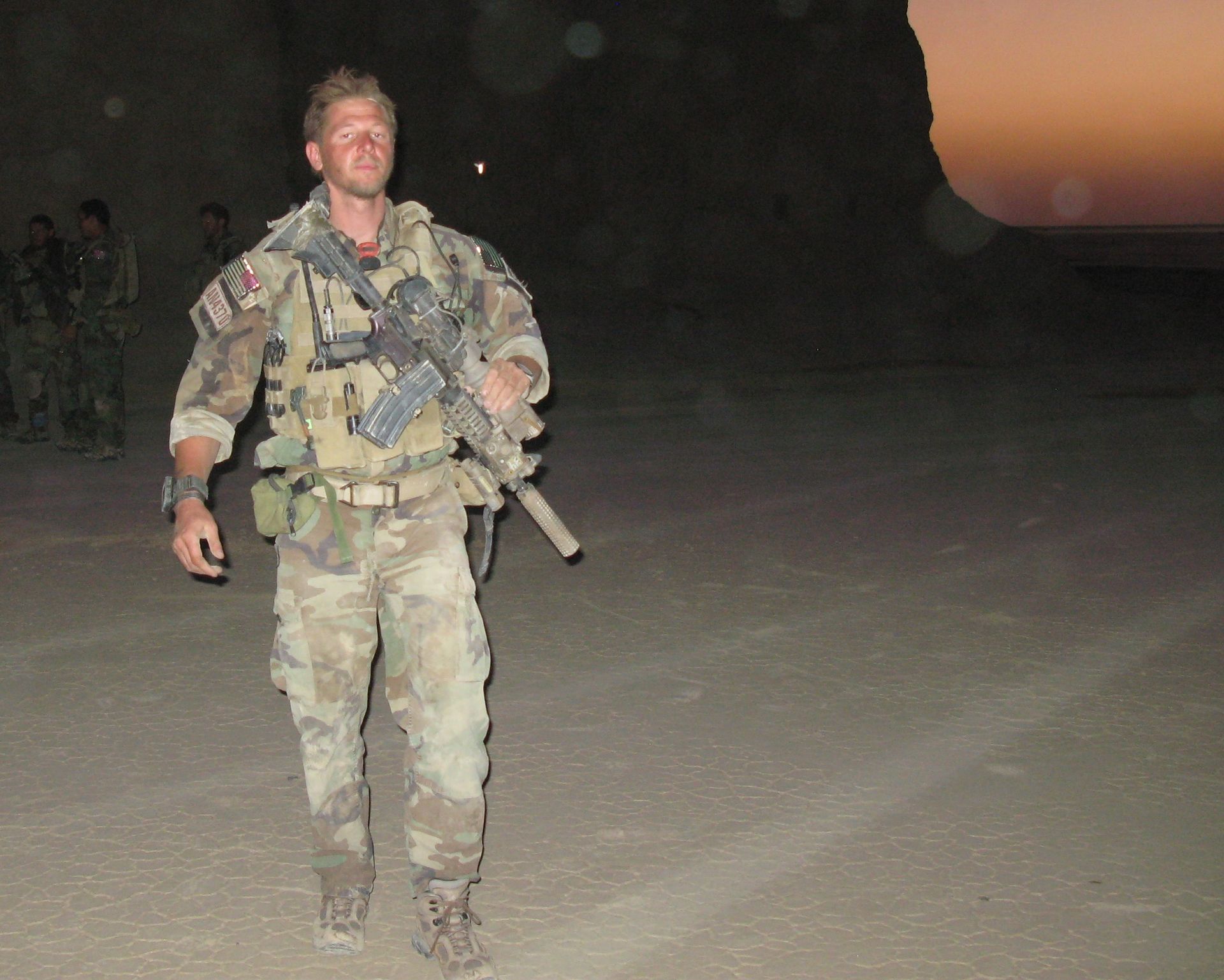
SSGT Chris Antonik was KIA during the operation on July 11, 2008
Weight
The crushing reality of what they had been through and the grief of losing Chris hit them all when they returned to base.
“A big Marine commander came by and said that we needed to get some things off our chest about the mission, or it would crush us. We talked it out then I took a walk. I was dazed, having slept for about an hour in two days.”
Chris’s death weighed heavy of Billy. He had lost his friend and mentor and the trauma of that mission continued to plague him. “I spiralled. Then I would think ‘if Chris were still here, would he spiral like this?’ Sometimes that helped, but many times, it didn’t. Losing a brother out there is a pain like no other. I will carry him with me every day of my life.”
Billy decided to transition away from K-9 and follow the military path that Chris was passionate about – a role that he continues to serve in today.
Decorated
Captain James Rose, along with several other members of Billy’s detachment, enthusiastically recommended he receive the Navy Cross for his actions. Part of the official report and recommendation, reads:
Sergeant Soutra’s heroic actions were directly responsible for saving the lives of his platoon after his Element Leader was mortally wounded. He was also directly responsible for saving the life of the wounded Commando as he appropriately applied tourniquets and effectively stemmed the bleeding… In addition, his actions under fire, violence of action in response to the enemy and utter mission focus completely turned the tide of the enemy ambush.
Billy said: “When Captain Rose told me that he was putting me forward, I didn’t want to be rude or sound ungrateful. It is such an honor but with that honor, comes a huge responsibility. I felt very conflicted about it and that feeling haunted me for years.”
On Billy’s actions, Chris Willingham recalls: “I had full confidence in his abilities in a combat environment but reading the witness statements about his actions was surreal. I was in awe of his tactical leadership in such a dynamic engagement and it pained me to know he lost a close friend during the mission. We train and prepare for combat but no amount of training can replicate what Billy went through. It was true testament to his character and courage.”
Shortly after Billy decided to transition away from K9, Posha was diagnosed with late-stage pancreatic cancer. There was nothing that could be done for him so the vets recommended he be put to sleep. Billy said: “He had done five deployments and was only seven years old. Not only that, we had shared the darkest of times together. Nobody else knew what we been through but Posha. Saying goodbye to him was harder than I ever through possible. I still keep his collar, leashes and toys – I take them everywhere with me.
“He was misunderstood by so many but we got each other. He slept with me and like so many dog teams, we shared the smallest space, but I was always happy to have him near.”
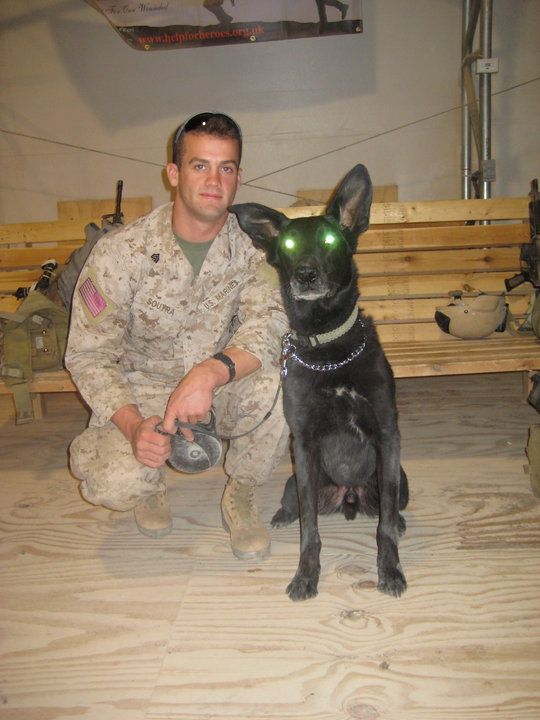
Brothers in arms: Posha and Soutra
Legend
US War Dogs President Chris Willingham said: “In the K-9 community, there is a long and distinguished list of handlers working as force multipliers: Fully mission-capable assets who are out there saving lives. Billy was already a part of that legacy but in that moment – on that mission, his courageous actions elevated him and he became a legend. I am proud to know him and to have served with him and we are honored to share his story.”
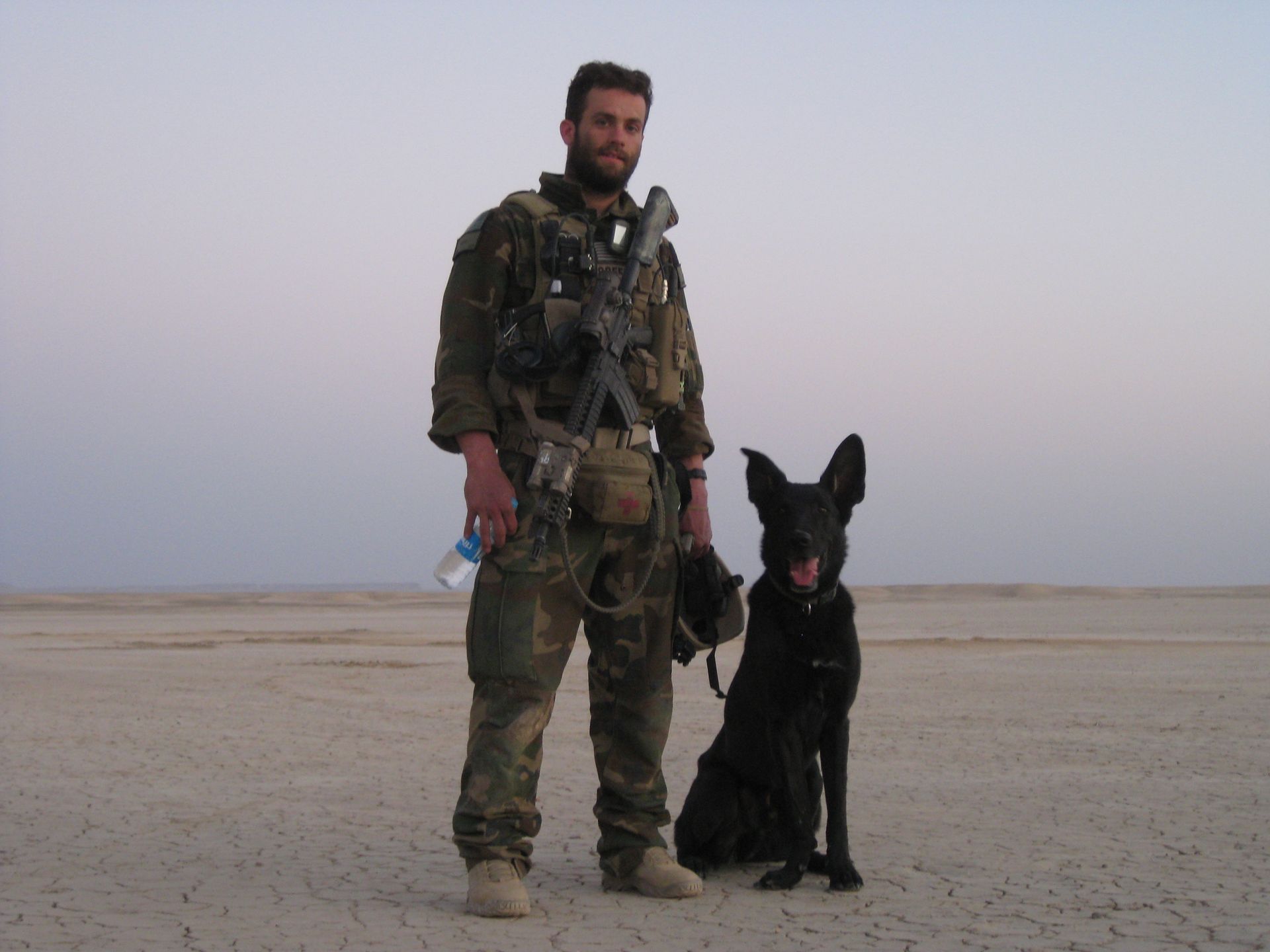
Navy Cross: Soutra’s actions made the history books, with Posha by his side
